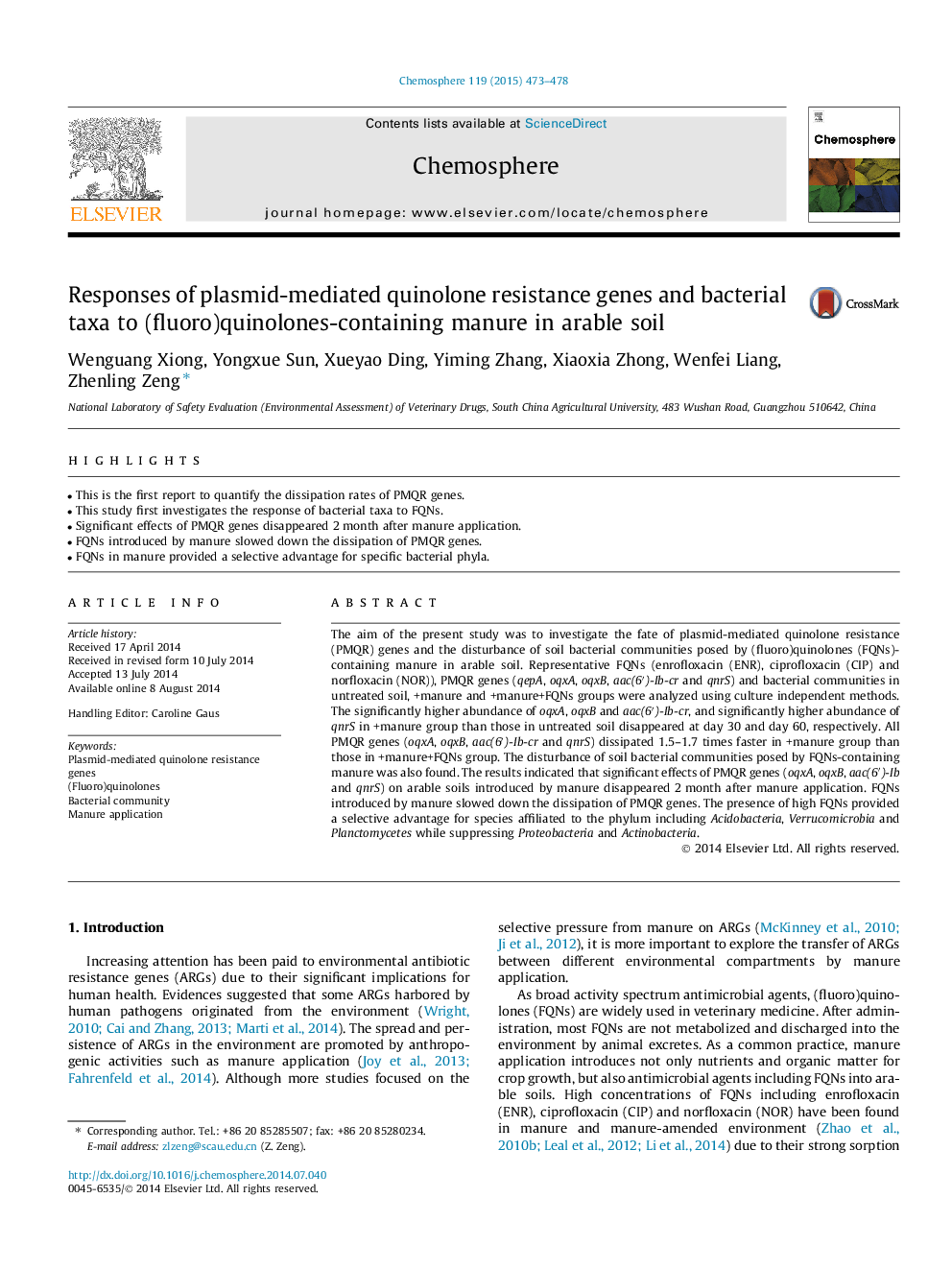| کد مقاله | کد نشریه | سال انتشار | مقاله انگلیسی | نسخه تمام متن |
|---|---|---|---|---|
| 4408657 | 1618852 | 2015 | 6 صفحه PDF | دانلود رایگان |
• This is the first report to quantify the dissipation rates of PMQR genes.
• This study first investigates the response of bacterial taxa to FQNs.
• Significant effects of PMQR genes disappeared 2 month after manure application.
• FQNs introduced by manure slowed down the dissipation of PMQR genes.
• FQNs in manure provided a selective advantage for specific bacterial phyla.
The aim of the present study was to investigate the fate of plasmid-mediated quinolone resistance (PMQR) genes and the disturbance of soil bacterial communities posed by (fluoro)quinolones (FQNs)-containing manure in arable soil. Representative FQNs (enrofloxacin (ENR), ciprofloxacin (CIP) and norfloxacin (NOR)), PMQR genes (qepA, oqxA, oqxB, aac(6′)-Ib-cr and qnrS) and bacterial communities in untreated soil, +manure and +manure+FQNs groups were analyzed using culture independent methods. The significantly higher abundance of oqxA, oqxB and aac(6′)-Ib-cr, and significantly higher abundance of qnrS in +manure group than those in untreated soil disappeared at day 30 and day 60, respectively. All PMQR genes (oqxA, oqxB, aac(6′)-Ib-cr and qnrS) dissipated 1.5–1.7 times faster in +manure group than those in +manure+FQNs group. The disturbance of soil bacterial communities posed by FQNs-containing manure was also found. The results indicated that significant effects of PMQR genes (oqxA, oqxB, aac(6′)-Ib and qnrS) on arable soils introduced by manure disappeared 2 month after manure application. FQNs introduced by manure slowed down the dissipation of PMQR genes. The presence of high FQNs provided a selective advantage for species affiliated to the phylum including Acidobacteria, Verrucomicrobia and Planctomycetes while suppressing Proteobacteria and Actinobacteria.
Journal: Chemosphere - Volume 119, January 2015, Pages 473–478
